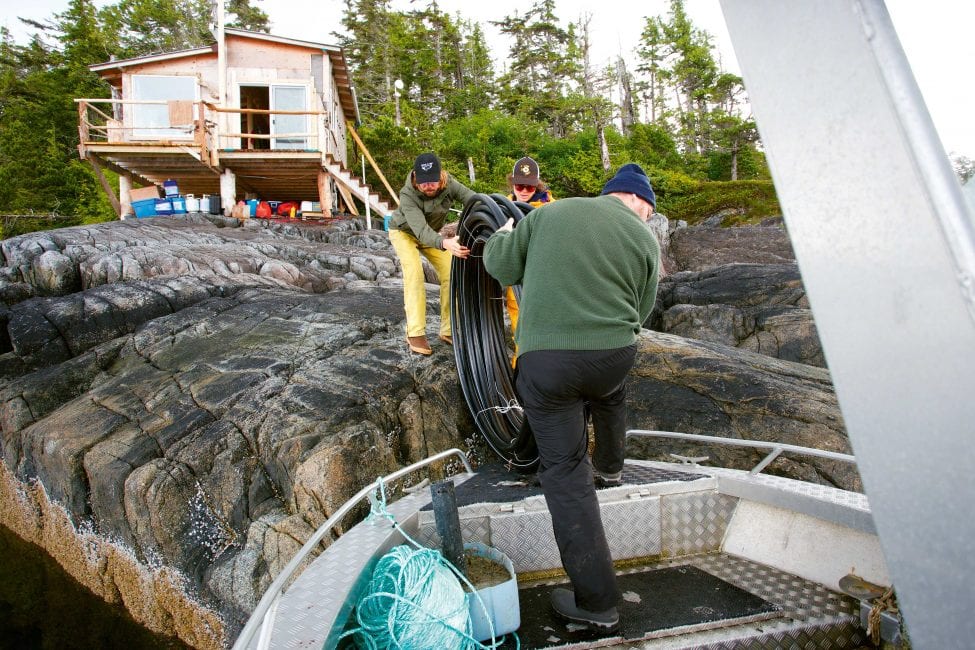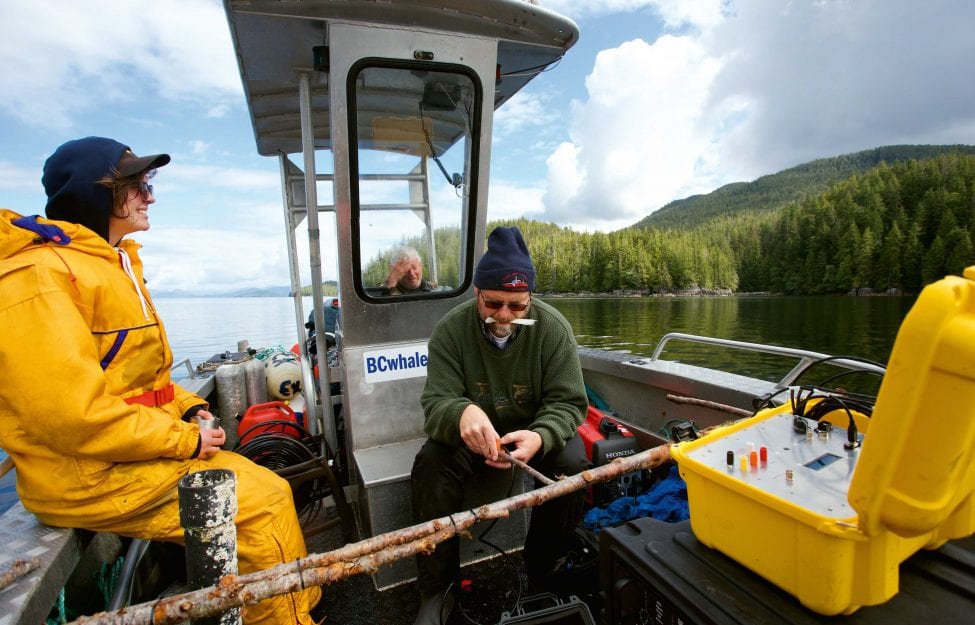A Sea of Sound
Part one: Finding a Voice in the Ocean
What Jacques Cousteau dubbed ‘Le Monde du Silence’ is anything but a silent world. Sound travels faster, further and more effectively in the ocean, a realm made for acoustic communication and one that is alive with new possibilities for how we perceive the animals that call it home. When it comes to sophisticated singers like humpback whales and complex social creatures like orcas, seeing through sound is the best way to build a more comprehensive understanding of the rich lives they lead underwater. In collaboration with the Gitga’at First Nation and WWF-Canada, Janie Wray of the North Coast Cetacean Society and post-doctoral researcher Ben Hendricks have set up a novel project that tunes into the ocean’s orchestra and will help them gain insights into the life histories of whales on the coast of British Columbia.
In the gentle lilt of Janie Wray’s voice, a thrill of excitement courses like an electrical undercurrent when she talks about the songs of the sea. The clicks, squeals, whistles and singing that most of us appreciate as beautiful but typically never explore further than some looped recording in a hotel spa or yoga studio hold far more portent for this cetacean scientist. ‘I’m pretty sure I was nine years old when I first heard a humpback song,’ she says. ‘My mother tells me now that I carried a little red tape recorder around with me and refused to let it go. I kept playing that song over and over and over again.’ For Janie, the magical voice trapped in her cassette tape spoke to what would become a lifelong passion. ‘There was just something about that sound that really had an impact on me as a child, and it obviously stuck…’ There was no need for nine-year-old Janie to embellish those voices with kitsch renditions of pop hits on pan pipes like those hotel spa playlists. To her they were a chorus of clues that would help her understand an entirely different world underwater, a song that connected her to the ocean she later learned to love so much.
Sound in the sea means far more to marine scientists than the soothing whale songs we appreciate in recordings; it is an emerging research field that opens up new possibilities for how we interpret and monitor ecosystems. Divers may already be well acquainted with the snapping, popping, crackling and hissing sounds resonating from their favourite reef haunts. I myself have been known to sink to the sea floor, using up what little precious breath I still have to burble alien sounds from my throat to win the attention of a curious roman seabream in the kelp forest of my home dive spot on South Africa’s Cape Peninsula. Fishermen on the coastline here know fish for their barking, thrumming and chirping; from the resonant drumming of dusky Argyrosomus japonicus and silver A. inodorus kob to the jaw-grinding sound of the aptly named spotted grunter Pomadasys commersonnii, the ocean expresses itself through its characters and characteristics.
Of all the elements of this dynamic ecosystem that play the sea’s symphony, it is the cetaceans – whales, dolphins and porpoises – that are arguably the most famous and whose acoustic communication is extraordinarily sophisticated. The unique and complex voices of whales, and in particular the fin and humpback whales and orcas that cruise the coastal waters of British Columbia, are what keep the scientific curiosity of Janie and her team piqued. ‘Some whales spend most of their day underwater. While we can (and do) use a variety of different methods to understand these animals, it makes sense to listen in to what they are mostly doing: moving and communicating underwater, out of sight where we’d typically be tracking them from the surface,’ she explains. ‘Sound helps us develop a much more complete picture of the life history of whales.’



